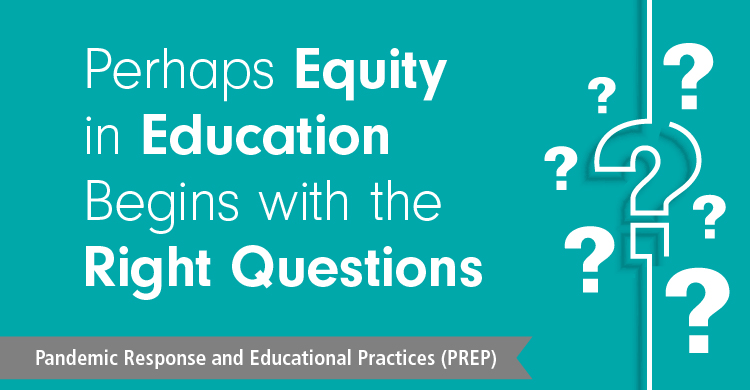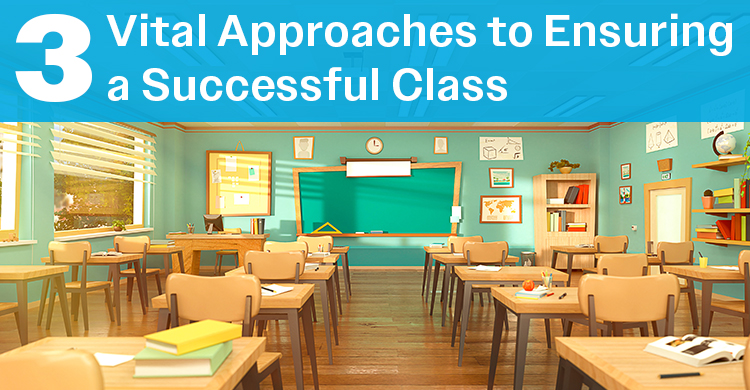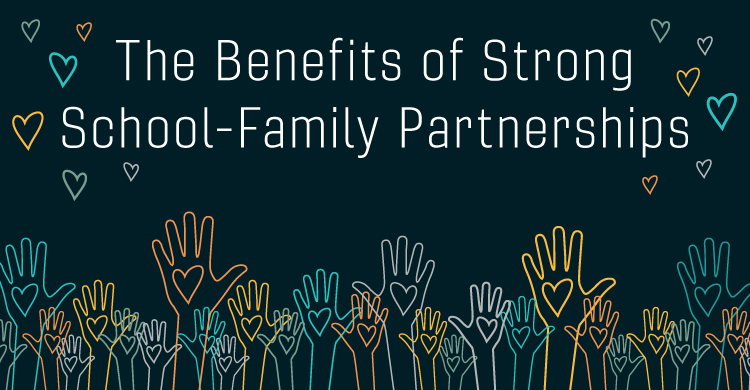This entry is the 15th in a blog series called Pandemic Response and Educational Practices (PREP), which aims to highlight and further the important work educators are doing amid the worldwide COVID-19 crisis.
I begin this blog post with an acknowledgment that I come from a place of privilege. My upbringing, my educational experiences, my career path, and my daily life have been shaped by opportunities afforded me because I am a white Canadian of colonial ancestry.
For this reason, I approach the topic of equity in education with a tentative stance. Instead of definitive answers for ensuring there is equity in education, I will spend time posing questions as a first step toward actionable solutions. Good questions precede good decisions.
The mountain and the bench
I often explore the work of self-described “renegade sociologist” Holiday Phillips. Recently, she posted a reflection on her social media platforms that questioned the notion of equity in an important way—she asked whether equity was simply about getting every person to “the top of the same mountain,” or if there might be more at stake.
By “mountain,” she referenced opportunity for the same jobs, for the same leadership positions, for the same economic advantages. She wondered if it might be valuable to consider whether the mountain itself was one every person should be striving to climb; whether there might be other mountains equally or even more worthy of our time—mountains that value different kinds of work, different ways of leading, and different views of economic success.
This made me think about the mountains our education system has decided every student must climb—specific learning goals, specific behaviors, specific values. I wonder whether these goals, behaviors, and values reflect a singular worldview. This is a question worth pursuing, I think.
This question reminds me of a presentation given at my school division a while ago by Michael Gatin, an educational leader grounded in traditional Indigenous teachings in my home province. His moving talk centered on the idea of making room on “the bench” for people of varied worldviews, cultures, and experiences.
He posed these questions: When systems sit on their benches to make decisions and determine priorities, who has been afforded a spot on that bench while those decisions are being made? Who has been given a voice?
His message was an important one. The urgency of making decisions that serve equitable outcomes for students is undeniable. We want each and every learner to experience success.
But Holiday’s message this morning got me thinking: What do we define as equitable success? What if education isn’t simply about making room on our system’s bench for everyone? What if education is also about making room on other benches, so we might experience different priorities and values—different vantage points grounded in different experiences. Which benches and mountains will guide us to equity and can we visit more than one at the same time?
In my newly drafted book on self-assessment, I explore the idea of assessment practices that reflect the learners in our care. I share the notion that education could become more reciprocal; that the identities, experiences, cultural backgrounds, sexual orientations, genders, values, and worldviews of our learners could provide meaningful contexts for any and all learning that occupies their time.
Students need experiences with benches and mountains that allow them to be seen. Perhaps, by opening up our idea of how education might be contextualized and experienced, we might work toward an educational system that equitably reflects our learners.
Examining the bench and the mountain
Before working to get everyone in the same place in the name of equity, we might ask some questions about the place itself—the bench and the mountain. Here are some things we might consider:
- To what degree does our educational system assume the worth of particular kinds and ways of learning? Do we value some attributes of our learners over others (for example, outspoken, extroverted, quick processors)? Does this worth reflect the priorities of a particular group? Does it reflect those of our students and their families?
- How might we acknowledge the benches and mountains that exist? How can we engage in reconciliation and acknowledge the past while remaining optimistic about the future? How can we make space for many voices in our classrooms and schools? To learn about many experiences? To bear witness to many worldviews?
- How might we embed our learning experiences within place? How might we reflect the place-based experiences of each member of our educational communities?
- How might we balance our required learning goals and our mandated assessment priorities with the beliefs, values, and needs of the students we serve? How might we engage our students in things that matter to them and in ways that support their holistic needs? How might we shift our educational structures to allow for multiple benches and mountains? Multiple voices?
- How might we offer choice and increased flexibility in how and what students explore and learn? How can we offer academic options that are appealing to students and that encourage investment in learning? How could we assess students in varied ways while still checking on important skills and understanding? How can we offer students the mentorship and instruction they need while still allowing them to have a voice in our schools and classrooms?
- How might we use assessment evidence to empower and accelerate growth and opportunity as opposed to diminish, sort, and track learners? How could assessment inform expansive rather than narrow learning? How might assessment invite us to look for strengths rather than deficits? To make decisions that enrich the experiences we offer rather than simply engage in tasks that feel like a list of “to-dos”?
Questions like these invite us to situate conversations about equity within a broader consideration of what matters most in our schools, communities, and in the lives of our students. When we strive to provide equitable access to opportunities for all students, we might first interrogate what counts as an “opportunity,” and whether our goals reflect what only matters in a white, colonial culture. Educational systems that define success in a singular way, with a singular worldview, will never achieve equity for learners.
Final thoughts
I wish I could have provided a list of “Ten Strategies to Achieve Equity in Education.” I wish I had all the answers and that the answers were quick and easy to apply, but with a concept as important and complex as equity, quick answers only lead to more struggle down the road.
Our students do not have equitable opportunity in our education system because of years of oppression, overt discrimination, systemic policies that ensure success for only a few, as well as a definition of achievement that is far too narrow.
Before we can begin to imagine education as a place of equity for all, we have to look deep within ourselves and our systems and ask some hard questions. This is our work.
Writer’s note: A special thank you to my friend and colleague Lauren Porosoff, who helped me ensure the message on paper reflected the one in my head and heart.
[author_bio id=”203″]






